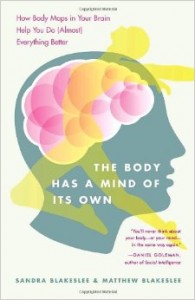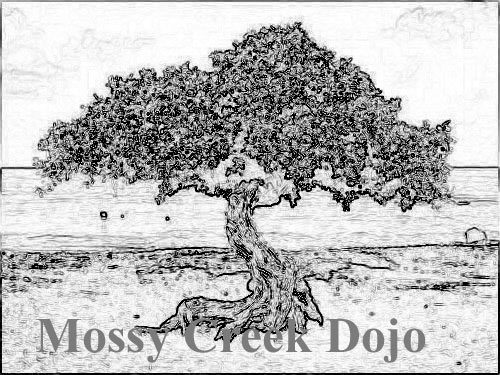 I have been reading a lot of lay level neuroscience this year trying to better understand some of the neural system hacks that I believe we take advantage of in the martial arts on a regular basis. “The Body Has A Mind Of Its Own” is written by Sandra Blakeslee and Matthew Blakeslee. The book is a synthesis of current neuroscience research that tackles an old philosophical problem of mind body. I get frustrated when I come across information and do not have a reliable date of publication especially with nonfiction work which may become obsolete. The Body Has A Mind Of Its Own was published in 2007.
I have been reading a lot of lay level neuroscience this year trying to better understand some of the neural system hacks that I believe we take advantage of in the martial arts on a regular basis. “The Body Has A Mind Of Its Own” is written by Sandra Blakeslee and Matthew Blakeslee. The book is a synthesis of current neuroscience research that tackles an old philosophical problem of mind body. I get frustrated when I come across information and do not have a reliable date of publication especially with nonfiction work which may become obsolete. The Body Has A Mind Of Its Own was published in 2007.
This book starts out describing how your brain has multiple virtual maps of your body represented by sets of neurons in specific physical areas of the brain. Originally described as mandala, some of these maps are also known to be present in other animals particularly other primates. You have areas of your brain that light up on functional brain imaging when you use a certain body part, feel a certain emotion, feel pain, taste food, etc. In humans the largest areas of body maps are devoted to our fingers and our mouth. These areas are plastic. For instance, if you start to learn to play the guitar, the area of your brain that maps fine finger movements will physically enlarge after a period of time.
The body maps make it possible to run through complex movements and get benefit equal to actual practice. This is different than watching a video of the complex movement. The process involves actually thinking through a movement only not actually moving. For this to be effective though a person must have a baseline competence of the complex movement for mental imagery to help. For example, if you cannot play a piece of music, then mentally playing the piece is not possible; but if you know the rudimentary musical score then mental imagery will assist in making the performance better. Eric Pearson (an aikido instructor I have trained with) describes various levels of performance of martial arts skill and equating the levels to the ability to write. Printing first, then cursive, then artistic license to change around the shape of the letters but fundamentally they still are representative of the letter you are trying to denote.
As learning occurs the brain hardwiring actually changes on a physical level. This has the effect of moving well learned movements into “older” areas of the brain which are less conscious. The tachi waza in judo for instance that you can use effectively in shihai without conscious thought has moved into an older part of the brain. The Blakeslee’s give a good description of the brain maps, the scientists who first described them, and current experiments that confirm or deny the initial theories of cognition. Also described are other behavioral/cognitive strategies that have been tried to improve performance that do not work like relaxation techniques.
There is a decent portion of the book that is related to some medical oddities that are more difficult to find relevance to martial arts training.
Some definitions of some interesting neurological processes are also given such as the theory of affordances. It basically states that people “view their environments not in terms of objectively defined shapes and volumes but in terms of their own behavioral potential. In other words, you immediately apprehend what you see in terms of how you think you can interact with what you see. You see affordances.” The example given in the book is how a lily pad on the edge of the lake has different affordances for a frog, a hippo, and a sparrow. The frog and the hippo both see something they can swim through and submerge themselves in but “swimmablity” does not occur to the sparrow. The frog sees the lily pad as being able to be sat upon. The hippo does not see “sittablity” as an affordance. I suppose for martial arts training, the more you train the more you see body parts as have the affordance of “kote gaeshi” or a pencil as having the affordance of “weopanizing” like a kubaton.
In 1971 “place cells” were described that seem to reside in the hippocampus that allow you to know your orientation in context of your surroundings. Later in 2005 “grid cells” were described that seem to reside in the entorhinal cortex, a higher cortical function that allows dead reckoning without any context. People who are good at navigating probably have a robust area of grid cells in their brain. When you look at athletes, they certainly need fast reflexes, trained muscles, great eyesight, etc, but they probably also have a great set of place and grid cells to allow him to map the whole soccer field and have a very innate sense of where his body is in that space.
In monkeys, an area in their parietal lobe enlarges as they pick up a object and begin using it as a tool. For humans if we pick up a baseball bat our personal space enlarges to include everything the bat can reach. If we become a master of using the baseball bat we can feel wind resistance, impact of a ball, the timing of the swing just as if we were touching the ball with our hand directly. A blind person using a cane eventually gets to where the perceptual experience “feels” located at the tip of the cane. The concept of “let the sword become part of you” has more truth than I realized. It is not a simple metaphorical saying. With enough practice with a weapon, parts of your brain undergo physical change to incorporate the object into your body maps. An interesting items noted here was that training the monkeys to use a tool ( in this case a rake) took 10-14 days regardless of the number of hours of training, how streamlined the protocol, or the perceived ability of the monkey. It turns out that this neuroplasticity requires activated genes to grow new neural connections and 10 days is the minimum time it seems to take to get the genetic product changed.
This also explains road rage to some extent. We spend so much time in our cars, the car has become an extension of our personal space. If someone cuts us off in a car it is analogous to someone breaking in line and shoving you out of the way in a very real way as far as your brains experience is concerned.
Mirror cells are another interesting brain map that allows you to simulate others actions – not only the action but the actions intent. These cells explain why when a friend hits his thumb with a hammer and shows painful body language, you withdraw your own thumb and grimace.
Intuition cells (also called Von Economo Neurons) are located in the anterior cingulate gyrus and frontal insular cortex and so far have been found in humans, apes, whales, and elephants. These cells in humans number about 200,000 and are large and very interconnected. These seem to be where social emotions are processed i.e., love-hate, empathy-contempt, pride-humiliation. Interestingly these cells have been implicated as one of the fundamental problems in the disorder autism. This book describes the neurophysiology basis of behaviors reviewed by Gavin DeBecker in “The Gift Of Fear”.
The right frontal insula is where the human brain seems to integrate information from several other areas of the brain like the amygdala (links emotions to experience), the orbitofrontal cortex (plans and prioritizes in relation to risk and reward), and the anterior cingulate cortex (monitors behavior for mistakes and evaluates contexts). This area is very active when you are trying to make fast intuitive decisions. In Blink by Malcolm Gladwell this is called “thin slicing” information. I will put up a review of the Gladwell book in the future.
Often people who practice martial arts for a long time develop some form of meditation. People who are skilled at meditation can gain some conscious control over typically unconscious activities like heart rate and oxygen consumption. People who meditate regularly have larger right frontal insula and left prefrontal cortex (which is associated with feelings of joy and happiness). This further demonstrates the plasticity of the brain in terms of how we train.
Overall the book is well written. It does not bog down in technical neuroanatomy jargon. It is 215 pages long and includes a small glossary of any technical terms that are used. Sometimes technical nonfiction is slow to read but this book was more like a novel in the page turner aspect.
